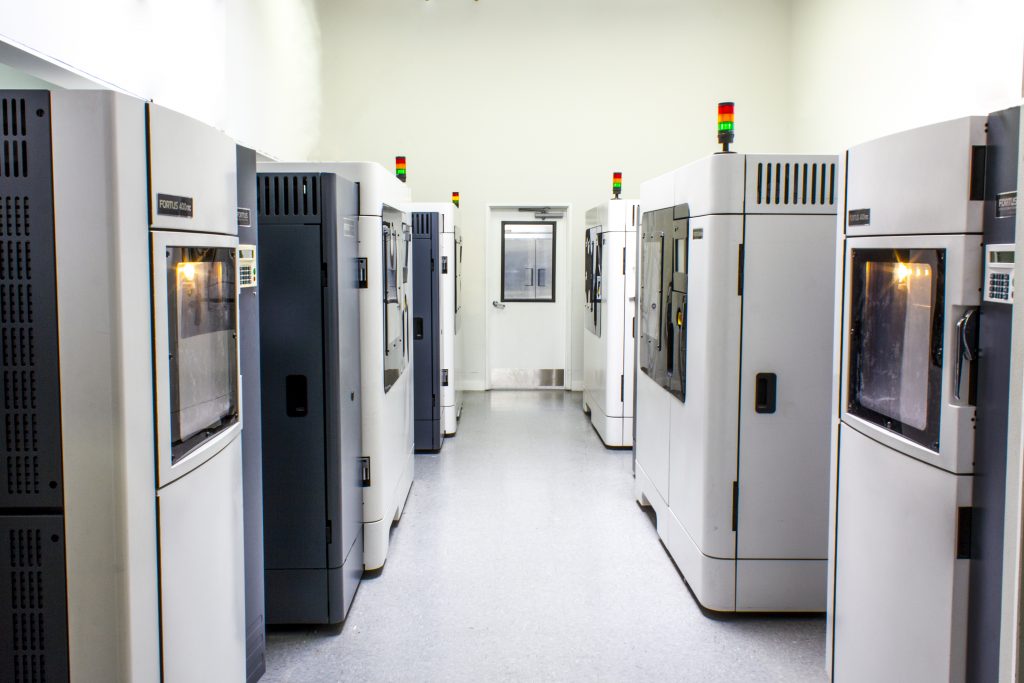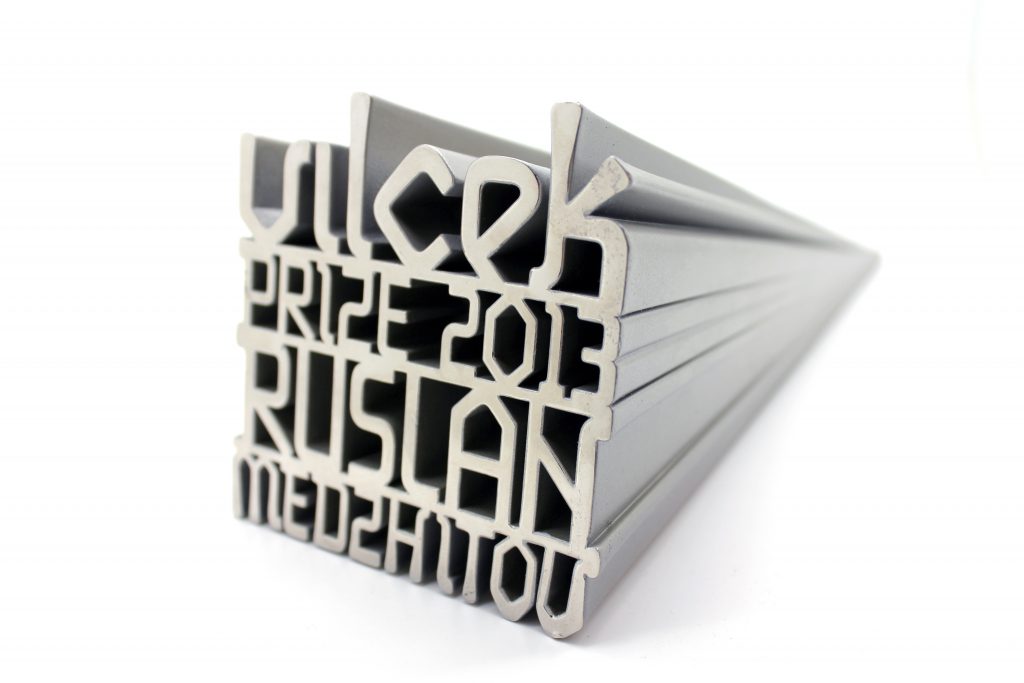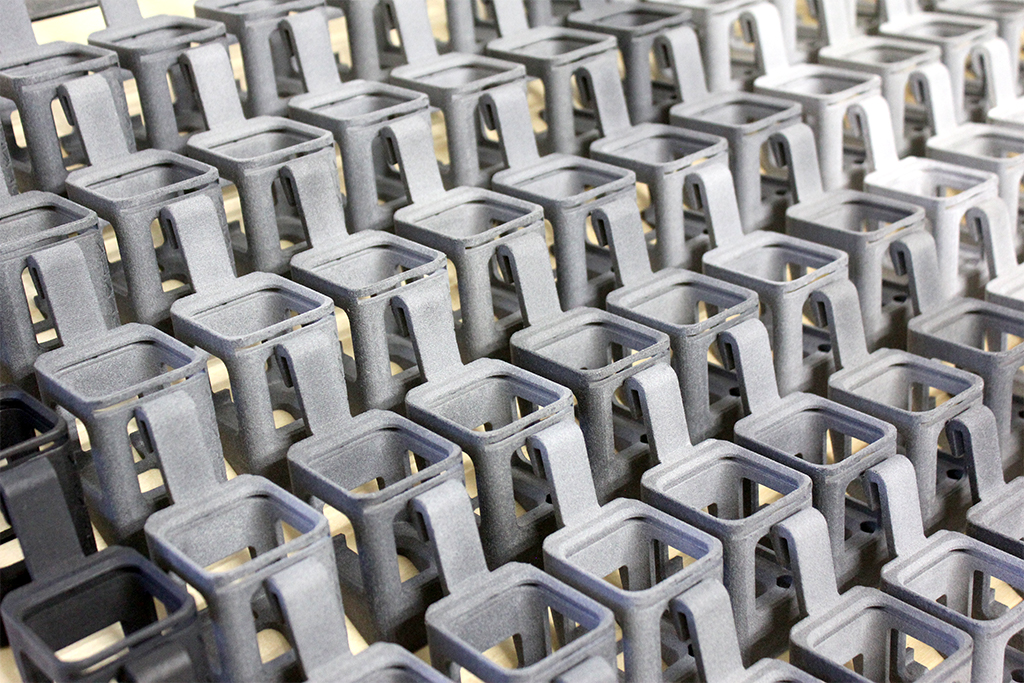I was very impressed with Ken Burns’ presentation at Additive Manufacturing Strategies in Boston. Ken is the technical sales director of the 3D printing services and manufacturing company Forecast3D. Originally set up to do urethane casting, the company now deploys HP MJF, FDM, DMLS, SLA, and Polyjet 3D printing technologies as well as casting. Focusing on bridge manufacturing and short-run production the company recently has bet big on MJF as a manufacturing technology. Many bureaus are continually under threat and expanding because of renewed interest in 3D printing. On the one hand, 3D printing news brings in new customers but some of these then switch to desktop and in house 3D printing. Can service bureaus cross the chasm and play a role in manufacturing millions of products with 3D printing? Or will they succumb to pressures from much larger firms? In different verticals we see that companies are taking very different approaches to adopt 3D Printing while in some industries there is a sharp division between the outsourcers and companies that do in house 3D printing. In medical device, for example, some companies are making huge investments in doing in house production while others immediately outsource. Millions of hearing aids are made in house while only car companies have significantly invested in taking prototyping in house. It is a very exciting time to be a pioneering 3D printing service so we asked Ken to tell us more.
How did Forecast3D get started?
Forecast 3D started with two brothers: Corey & Donovan Weber when they were in their early 20’s. They started in their garage and eventually purchased a single SLA machine (with the help of a loan from their grandfather). Corey developed an innovative method for urethane casting, which helped establish them and differentiate them from other service providers.
How did you go from a regional player to a national one?
Having a strong, reliable, and passionate team that gave our early customer base a unique customer experience and dedicated customer service – this helped us to grow our technology offerings and be able to afford to adopt the latest equipment. It sounds cliché but we listened to what customers needed and answered by creating a national team. Whether it is a phone call or a face-to-face meeting we were committed to the resources to engage with our customers however the needed us. We have also never been complacent with our technology, processes and business systems.
You seem to have always been at the forefront of adopting new technologies. In hindsight, it all looks beautiful but surely you’ve also gotten bitten by adopting new technologies?
We wouldn’t say any of the technologies “bit us” but we have certainly had more success with some over others. The technologies all promise something “ground-breaking”; which is true to an extent, but it doesn’t mean they are the right fit for our business model. We have target customers and industries so we focus on technologies that can help us be successful with that lens. So if we miss the mark, it is usually a small miss.
Do you still do a lot of casting?
Absolutely. Like most traditional processes, they are not going away. In fact, 3D printing has helped improve some of these services like casting. We can do hybrid processes with casting and 3D printing. Casting is and remains a long term focus for us.
What do your customers use Polyjet for?
Fast prototypes – attractive show models. When they want full color parts, or parts with multiple materials and durometers in a single piece. Often used in the entertainment industry.
And FDM?
Robust parts – used in aerospace and automotive mostly, often when demanding environments (high heat resistance, chemical resistance, UV stability) are present. When part strength (and not so much aesthetics) is a priority.

What do you use DMLS for?
Prototype and end-use parts. Often times when a smaller quantity of metal parts is needed, and the geometry would be impossible or too difficult to machine.

SLA Chrome plated award part.
What was it like buying an SLA machine in 1996?
Exciting. It is still exciting to buy new 3D printing equipment in 2019. To be on the forefront of the 3D printing industry in the 90s was an incredible opportunity.

A ProCast Part.
What is ProCast?
Our proprietary urethane casting process, used for producing a short-run (4 to 400) quantity of parts. Often times the next step after a single prototype, and used when only low volume production is needed (product lines that don’t require thousands of parts). We typically start by 3D printing a master model using SLA, FDM, or PolyJet. Then the master model is sanded and finished to the customer’s desired surface finish/texture, and then that part is encapsulated into a silicone mold (which is the soft tool). And from that mold, we produce 20-30 parts at a time. We can cast in any color or texture.
What new technologies are you excited about?
There is a lot to be excited about these days. On the metals side you have a lot of movement with HP’s Metal Jet, DesktopMetal’s Production System, GE Additive and a few others. In the plastics space we are watching a lot of the OEMs looking at solving new problems…HP MJF’s color printer, Carbon, Evolve and Titan Robotics are a few that seem to be doing something different. We are also looking at a lot of technologies surrounding the printer ecosystem from software to automation equipment.
What advice would you give me if I were a company new to 3D printing?
Be realistic with what you are going to do with 3D printing. It’s not the silver bullet that solves all problems. It can be an amazing tool for prototyping or production if you have a good approach. Working with a service provider to test and qualify which technology is always a great start as you can assess lots of technologies.
What about if my firm wanted to use 3D printing for manufacturing?
Yes, there are several technologies now capable of manufacturing. We primarily use the HP’s Multi Jet Fusion (MJF), Stratasys Fused Deposition Modeling (FDM) and SLM (metals) technologies for manufacturing. Our 3D Manufacturing center has 24 of the HP MJF systems so we have the capacity to print tens of thousands of production parts a day. Industries like Aerospace and Healthcare have been taken advantage of FDM and SLM processes in production.
Is lack of automation in post processing holding 3D printing back?
Yes. Until recently there wasn’t a big demand for this type of equipment because there wasn’t a lot of production in high volumes happening in 3D printing; outside of a few niche applications. We have surveyed the market and while some equipment works we have spent a lot of our time developing these tools.
You seem to have taken a big bet on MJF?
Oh yes. We believe in the technology, and its ability to take 3D printing to the next level (beyond being used primarily for prototyping).

Why?
One word. Production. We want to go after high volume production opportunities in manufacturing. We firmly believe this technology is solving new problems and creating new opportunities for our customers. We have already seen it utilized in many great applications and expect that it grows exponentially over the next several years.
What do you use the MJF machines for?
Production. We also do a lot of prototyping with them. There are certainly applications and industries it is better suited for as we are limited by materials, part size, surface finish and a few other constraints.
What is the market like now for a service bureau?
The service bureau market has certainly changed over the last few years. There are several companies focusing on the software component and it some ways attempting to commoditize the space while others have differentiated with specific technologies. We have been position Forecast 3D as a Digital Manufacturing company. Going beyond typical service bureau capabilities to meet the requirements for production. With so many service bureaus we think it is important to focus on what you do best and execute that with laser focus.
Subscribe to Our Email Newsletter
Stay up-to-date on all the latest news from the 3D printing industry and receive information and offers from third party vendors.
You May Also Like
3D Printing Unpeeled: New Arkema Material for HP, Saddle and Macro MEMS
A new Arkema material for MJF is said to reduce costs per part by up to 25% and have an 85% reusability ratio. HP 3D HR PA 12 S has been...
3D Printing News Briefs, January 20, 2024: FDM, LPBF, Underwater 3D Printer, Racing, & More
We’re starting off with a process certification in today’s 3D Printing News Briefs, and then moving on to research about solute trapping, laser powder bed fusion, and then moving on...
3D Printing Webinar and Event Roundup: December 3, 2023
We’ve got plenty of events and webinars coming up for you this week! Quickparts is having a Manufacturing Roadshow, America Makes is holding a Member Town Hall, Stratafest makes two...
Formnext 2023 Day Three: Slam Dunk
I’m high—high on trade show. I’ve met numerous new faces and reconnected with old friends, creating an absolutely wonderful atmosphere. The excitement is palpable over several emerging developments. The high...































